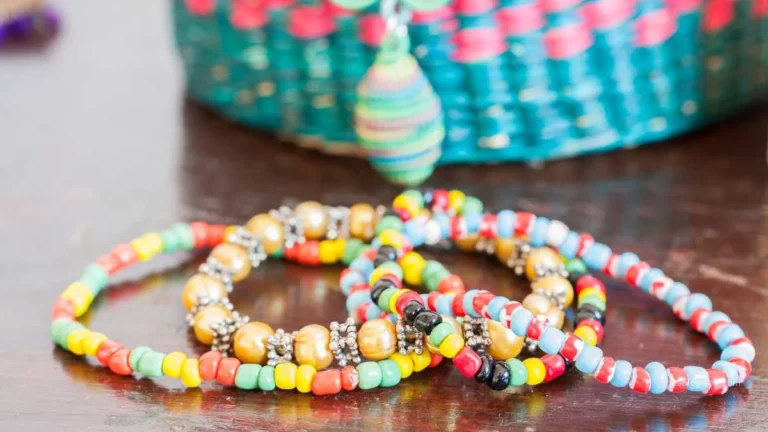Waist beads, an enchanting type of jewelry worn around the waist, trace their origins to ancient civilizations, notably ancient Egypt. Known for their aesthetic appeal and deep cultural significance, waist beads are more than just adornments. They are imbued with symbolism, representing beauty, sexuality, femininity, fertility, health, and maturity, depending on the cultural contexts in which they are worn.
Historical Origins and Evolution
Waist beads have been part of human culture for thousands of years, with their earliest use recorded in ancient Egypt. Historically known as “girdles,” these beads were not only ornaments but also status symbols, crafted from various materials such as shells, gold, and semi-precious stones. Their colors and designs often conveyed significant meaning, related to power, status, or spirituality.
Over time, the tradition of wearing waist beads spread throughout West Africa and became embedded in many cultural practices, particularly in countries such as Ghana, Nigeria, Senegal, and more. Each group adapted the use of beads, infusing them with local cultural values and meanings.
Cultural Significance
In many African societies, waist beads serve as a rite of passage, given to young women during puberty to signify their transition into womanhood. These beads are often associated with femininity and sexuality, subtly conveying maturity and eligibility for marriage.
Ghana:
In Ghana, different ethnic groups such as the Ashanti or Krobo use waist beads for various purposes. Among the Krobo, beads are used in Dipo ceremonies – a rite of passage for young women. They are adorned with beads crafted specifically for the occasion, symbolizing their fertility and readiness for adulthood.
Nigeria:
Among the Yoruba and Igbo communities of Nigeria, beads are often used to sculpt and accentuate a woman’s waist. For married women, the beads serve to entice and attract their husbands, while also conveying one’s fertility.
Senegal and Gambia:
In these regions, beads are worn as a symbol of wealth and aristocracy, as well as markers of heritage and pride. They are often passed down through generations as family heirlooms.
Symbolism of Materials and Colors
The materials and colors of waist beads are carefully chosen based on the symbolism they are intended to convey. Traditionally, beads made from seeds, wood, or glass are common, each material holding specific spiritual or health-related properties.
- Glass beads are particularly popular for their beauty and variety of colors.
- Metallic elements, like gold or silver, signify wealth and refinement.
- Gemstones are chosen for their healing properties and spiritual significance.
The colors of the beads also carry meanings:
- Red symbolizes excitement and passion.
- Yellow represents joy and vitality.
- Green stands for fertility and nature.
- Blue signifies loyalty and truth.
- White symbolizes purity and spiritual strength.
Modern Uses and Popularity
Today, waist beads have found a new role in the world of fashion and wellness. Beyond their traditional uses, they are now embraced by many across the globe as a tool for body shaping, weight loss, and fashion.
- Health and Wellness: Waist beads are increasingly used in weight management. They do not stretch; hence they can help indicate changes in weight—if the beads become tighter, one might have gained weight, and if looser, weight might have been lost. This traditional use has been modernized to fit fitness and wellness goals.
- Fashion Statements: Globally, waist beads are being adopted as a fashion trend. They are often worn over clothing or under crop tops, serving as unique and personal pieces of jewelry that celebrate heritage and personal style.
Conclusion: Waist beads
Waist beads are a timeless piece of jewelry rich with history and significance. From their origins in ancient Egypt to their revered place in African cultural traditions, and now to their modern applications in fashion and health, waist beads have transcended time and geography. They continue to celebrate the essence of womanhood, heritage, and personal expression, making them not only a piece of jewelry but also a carrier of deep cultural and personal identities. As the world becomes increasingly globalized, the story of beads highlights how traditional practices can evolve and integrate into the global culture, bringing new meanings and understandings to the beauty of ancient adornments.
